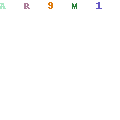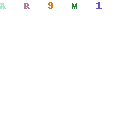Population
Chad is one of Africa’s least populated countries. The southern, rainy regions are densely populated, while the northern desert areas are in the immediate public. In 2019, the country’s average population density was estimated to be 12 residents per km2.
According to thesciencetutor, the country of Chad has the lowest urbanization rate in the region (23 percent, 2019), and the largest cities are the capital N’Djamena (1.1 million residents, 2012), Moundou (137,900) and Sarh (103,300).
The population consists of a few hundred ethnic groups, but both culturally and economically and religiously there is a strong distinction between the Sahel area and the forest savannah in the south.
The people of the Sahel are Muslims and feed on a combination of agriculture and semi-nomadic livestock management. The dominant group is Arabic-speaking baqqara (1.6 million); Other groups include kanuri (500,000), kanembu (700,000) and bagirmi (45,000) who speak Nilo-Saharan languages and Hausa (180,000), who speak a West Chadian language. In the Tibi Mountains there are 350,000 nomadizing toubou, who speak Nilo-Saharan languages and disintegrate in the distinct groups of teda and dazaga. At Lake Chad in the western part of the country there is a hunter people called haddad.
The southern parts of the country are dominated by non-Muslim groups of resident farmers who predominantly grow rice, cassava and sweet potatoes. Most of these groups practice indigenous African religions, but many are nominally Christian. They include both Nilo-Saharan peoples, most of whom are commonly referred to as sara (3 million), Afro-Asian (Chadian) peoples (including Masa, 200,000), and a large number of smaller groups who speak the Niger-Congo language.

Language
Official languages are French and Arabic. In the country, over one hundred languages belong to at least three different language families. The Afro-Asiatic includes Arabic (Chadic dialects) and Eastern Chad languages and Masa (compare Chad language). Some groups in the south speak Niger-Congo language. In the north, the Nilo-Saharan languages dominate. Distributed in the southern half of the country, the Bongo Baghmer languages are spoken, including the Nilo-Saharan languages.
Religion
In 2010, almost 60% of Chad’s population were Muslims. Islam came to the country as early as the 600s through General Uqba ibn Nafi (622–83), who served in the Umayyad dynasty. Sufism has a strong position; particularly prominent Sufic rulers are Tijaniya, who has incorporated some local African elements into his religious practice, as well as Sanusiya and Qadiriya. There are also more fundamentalist minorities in the country that include Wahhabism and Salafism.
The Muslims live mainly in the northern parts of the country, while the country’s Christians are mainly in the south. However, this pattern is breaking up, especially in the larger cities of the country.
Among the Christians, who are estimated at just over 30% of the population, about half are Catholics and a third are Protestants. Other Christian communities include Seventh-day Adventists, various variants of Baptist and Pentecostal churches, and Jehovah’s Witnesses.
It is estimated that about 10% of Chadians embrace traditional indigenous religion. In addition, there are nearly 100,000 followers in Bahad in Chad.
Since the French colonial period, Chad has been constitutionally a secular country. However, the Constitution and other law formulations on religious freedom do not work in practice. The government has banned some Muslim organizations propagating jihad. Another group that is banned is the sufi group Al Faid al-Djaria. This was banned because its members introduced music and dance in religious ceremonies and allowed women to participate in them. In addition, some state bodies have religious characteristics. The High Council for Islamic Affairs (HCIA) oversees Islamic activities on behalf of the government and the Directorate of Religious and Traditional Affairs, together with HCIA, organizes pilgrimage trips to Mecca. HCIA and the President together nominate the country’s highest imam, who is also the head of HCIA.
Religious education is prohibited in public schools, but religious organizations are permitted to run private schools. Therefore, there are many Arabic-speaking Islamic schools. These receive a great deal of financial support from abroad, including Saudi Arabia and Egypt.
The following days are national religious holidays: Prophet Muhammad’s birth, Easter Sunday, Id al-fitr, All Saints Day, Id al-adha and Christmas Day. It is common for Muslims and Christians to celebrate each other’s holidays.
